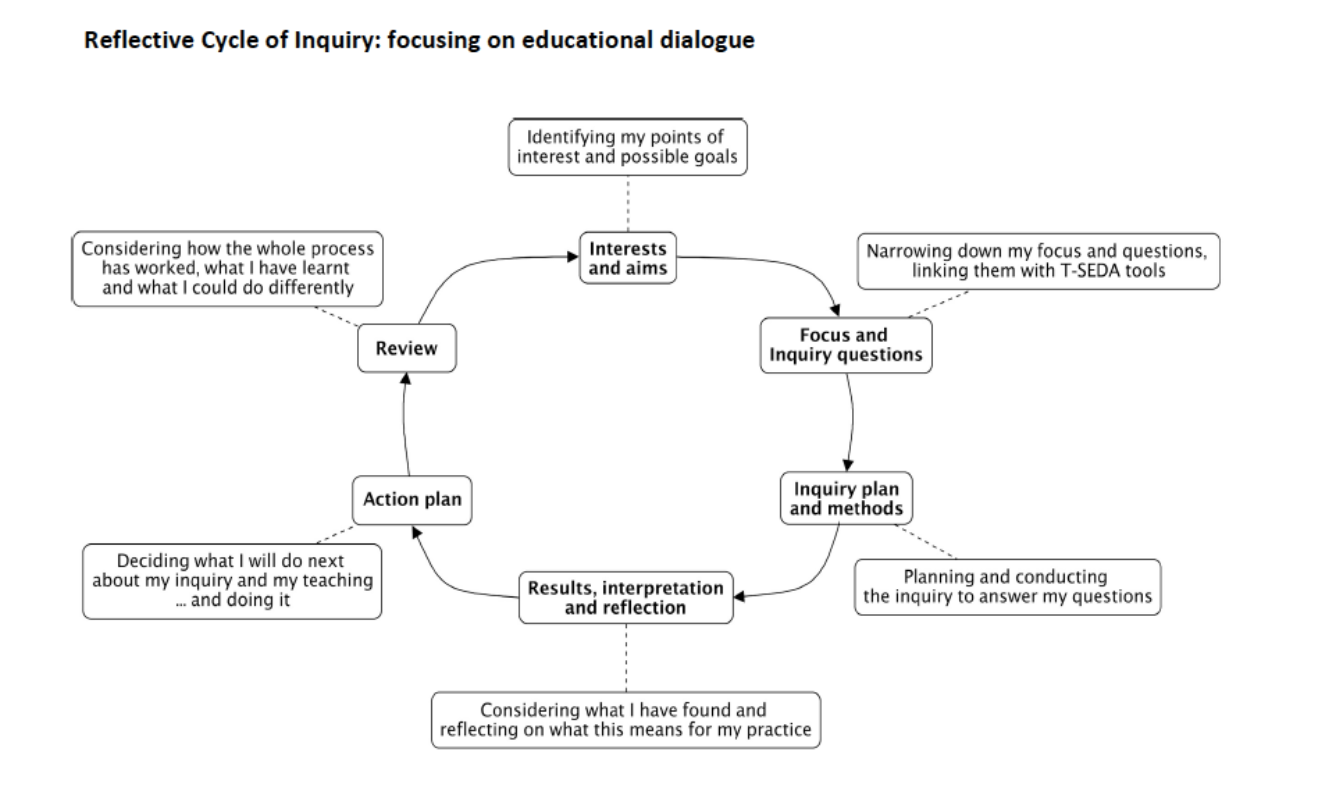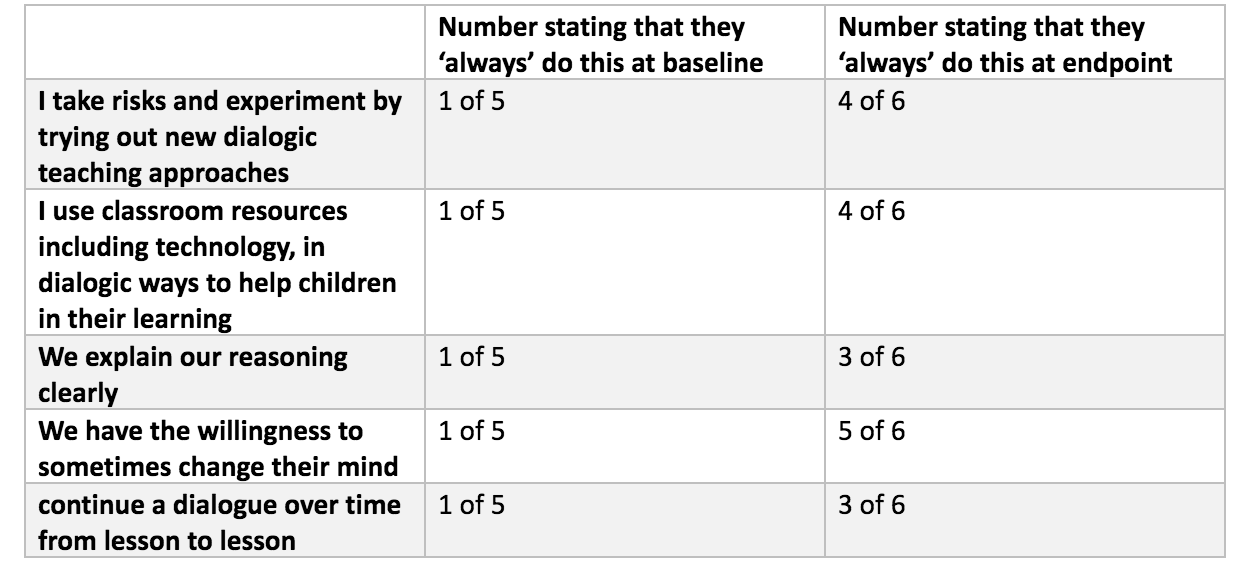Sarah Seleznyov, Director, London South (formerly Southwark) Teaching School Alliance shares a write up of recent research on dialogic teaching collectively led by London South Teaching School Alliance, Rathfern Primary Chartered College Hub School and University of Cambridge academics from the CEDiR Group (Cambridge Educational Dialogue Research Group).
How did the research project work?
The project helped teachers use the Teacher Scheme for Educational Dialogue Analysis (T-SEDA), a practical tool kit to support teachers in engaging with enquiry projects around dialogic teaching in their own classrooms. Key to this resource is a set of codes to enable teachers to analyse short extracts of classroom dialogue for both pupils and teachers, which they did repeatedly throughout the year of the research project, for example:
An initial analysis of a short extract of classroom talk enabled teachers to identify an inquiry question which would help them follow a cycle of enquiry across an academic year in their own classrooms and schools. Repeated coding opportunities helped them track the impact of their changes to practice:

Once they had set their inquiry questions, teachers attended five further sessions, in which they explored different research models for effective classroom talk, including the Voice 21 approach and associated tools, and were encouraged to access a set of research papers on various aspects of dialogic teaching.
What was the impact?
Participants were asked to complete the TSEDA pre- and post-programme audit to self-assess their own practice in relation to dialogical methods and that of their class. Firstly, they were asked to score themselves on a scale of 1-3 (where 1 is rarely, 2 is sometimes and 3 is always) in relation to 12 statements about their dialogical interactions, for example:
At baseline, teachers scored themselves an average of 2.4. At the end-point this had risen to 2.9.
Participants were also asked to score the class as a whole for its dialogical interaction using the same scale as above, for example:
At baseline, teachers scored the class an average of 2.3. At the end-point this had risen to 2.7.
The table reveals which statements showed the greatest difference between project start and end:

When asked to elaborate on which area of impact had been the strongest, teachers made comments which included:
“The research has led to me being better at supporting children to express their own ideas, views and feelings using speech. As individual self-expression has improved in the class children have begun to listen to each other and enter into dialogues that are meaningful.”
“I invite children to build on and elaborate on others’ ideas. I build time into my teaching sessions to ensure this and use visual hand signals to remind children that they are invited to ‘build on’ or ‘change’ (challenge) their peers’ ideas.”

Participating teachers were also asked to write up and evidence the outcomes of their projects using a simple case study proforma and to respond to a short series of questions at the end of the programme about their perceptions of its successes and challenges. They identified the coding of transcripts using the T-SEDA codes as having the greatest impact on practice.
Coding transcripts was used to track the impact on individual teachers’ practices and to support those working on dialogic teaching at whole school level. One middle leader supported teachers across the school to transcribe discussions, code each discursive contribution and then take a mean frequency of the codes by numbering each code and counting how many times they were evident in the discussion.
“The coding criteria and the observations worked well as I was able to build up a picture of the discussions taking place across the school and use these findings as part of a ‘teachers’ toolkit’ for effective feedback.”
Some limited the numbers of codes used, to enable a tight focus on the development of a particular aspect of dialogic practice, and for some, this enabled them to uncover hidden problems with interventions they had thought were working successfully. For example, a Year 1 teacher who had introduced hand signals to encourage pupils to listen, and then challenge or build on others’ ideas, found that out of 80 interactions in the 10 minute group discussion, 15 were coded as building on and only four were coded as challenging. It was clear that the hand signals were often still being used as another form of ‘hands up’, with pupils becoming stuck on what other pupils had said previously, rather than listen to the last speaker, or claiming to want to challenge, whilst really agreeing with his friend. This made the teacher analyse her own contributions to the dialogue to see how these could be changed to encourage better peer-to-peer interactions.
Many participants intended to continue to use the codes beyond the lifetime of the project, and with other members of staff such as Teaching Assistants:
“I plan to record and transcribe a group and class discussion each half term, and analyse how I am interacting with children.”
The project will run again next year with funds from City of London Corporation and the support of University of Cambridge, and seeks to replicate and build on this year’s success – key to this will be the use of coded transcripts.
To find out about getting involved in the 2019-20 project, contact [email protected] and for more about TSEDA see http://bit.ly/T-SEDA and for ASPE, see https://www.aspe-uk.eu/
© 2022 Voice 21. Voice 21 is a registered charity in England and Wales. Charity number 1152672 | Company no. 08165798